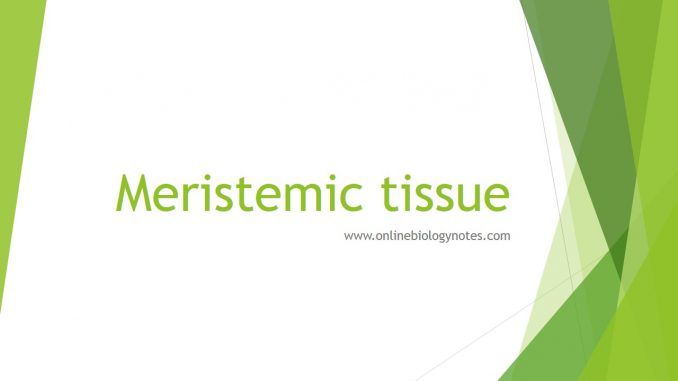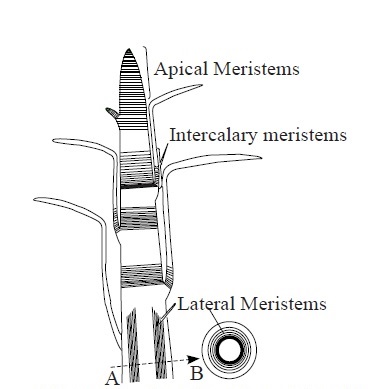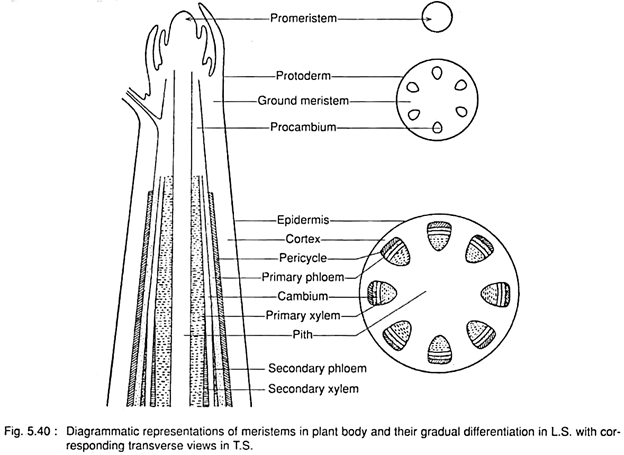
Characteristics of meristematic tissue
- (Greek word; meristos- means “divisible”)
- Meristematic tissue is a group of cells that has power of continuous division.
- Cells are immature and young
- Meristematic tissue is commonly called as meristems.
- Shape of cell: each cell is oval, rounded, polygonal or rectangular
- Size: small
- Intercellular space: Absent
- Cell wall: thin walled made up of cellulose
- Nucleus: single large and prominent
- Reserved food: cell do not store food
- Cell division: high capacity and continuous
- Metabolic activity: very high
Types of Meristematic tissue
- Based on origin
- Based on position
- Based on function
1. Types of meristematic tissue on the basis of origin:
i. Promeristem (primodial meristem)
ii. Primary meristem
iii. Secondary meristem
Promeristem:
- Origin: embryonic origin
- It is earliest and youngest meristematic tissue
- It is present in growing root and shoot tip.
- It give rises to primary meristem,
Primary meristem:
- Origin: from Promeristem
- Cell are always active and dividing
- Present below promeristem in the shoot and root tip, and also in intercalary position
- It give rises to secondary meristem, and primary permanent tissue.
Secondary meristem:
- Origin: from primary meristem
- It is developed later on life
- It give rises to secondary permanent tissue
2. Types of Meristematic tissue on the basis of position:

i. Apical meristem
ii. Intercalary meristem
iii. Lateral meristem
Apical Meristem:
- Position: present at apical parts of plant such as root tip and shoot tip
- It helps in increase in height of plants.
- Apical meristem has two distinct zone:
- Promeristem zone: contains group of dividing cell (apical initials)
- Meristematic zone: contains protoderms (epiderm), procambium (primary vascular tissue) and ground meristem (cortex and pith).
Intercalary Meristem:
- Position: present in intercalary position in the leaves and internode
- It is a part of apical meristem
- It also adds to height of plants
- Commonly present in monocots, grass and pines
Lateral Meristem:
- Position: present on lateral side of stem and root
- It helps in increases the diameter or thickness of plants.
- Example: vascular cambium (primary meristem) and cork cambium (secondary meristem)
3. Types of meristematic tissue on the basis of function:
i. Protoderm
ii. Procambium
iii. Ground meristem
Protoderm:
- Function: protection from mechanical injury
- It gives rise to epidermis layer.
- It is the outermost meristematic tissue
Procambium:
- Function: transport of water and nutrition
- It gives rise to vascular tissue (xylem and phloem)
- It is the innermost meristematic tissue
Ground meristem:
- Function: various functions
- It gives rise to cortex, endodermis, pericycle and pith in dicot and hypodermis, ground tissue in monocot.

